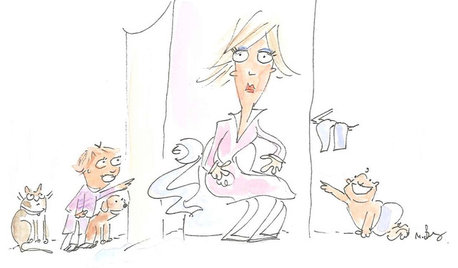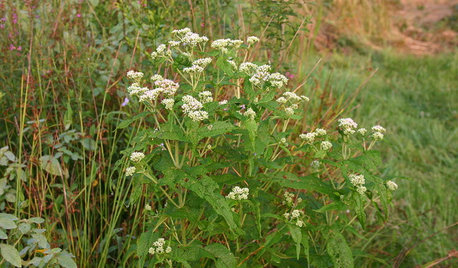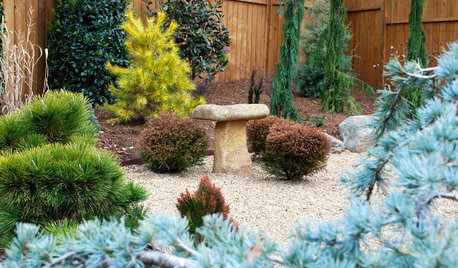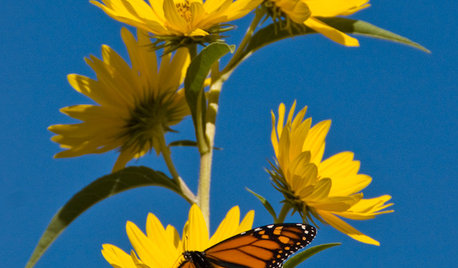People Vitamins for plants
notanatural
17 years ago
Featured Answer
Sort by:Oldest
Comments (104)
Karen S. (7b, NYC)
6 years agolitterbuggy (z7b, Utah)
6 years agolast modified: 6 years agoRelated Discussions
Vitamins and plants
Comments (4)Ok thanks, I will maybe do a side by side test, thats a good idea. The test will be the same soil and plants will have 1/2 strength dyna gro fp and gro teck. One plant with the minerial additive, one with out. I have used a product called "sweet" in a in-organic fertilizer program, with nothing to compare side by side, the plants used nutrients very fast with a boosted motabolism as that is what the product does. I have considered maybe the product is a not needed, I considered maybe it is only the Mg and the S in the product that really did anything but that is not the case. I will say no more untill I do the side by side test and will post some picks. Thank you and I will not be going on about this anymore. :)...See MoreBizarre plant, need you smart plant people! :)
Comments (3)Sounds like oregon grape (Berberis aquifolium). I'm in Ohio and it grows well here. This site has a good picture and description: www.treknature.com/gallery/photo10824.htm...See MoreHuman vitamins for plants
Comments (21)Ok yes human vitamins are good for plants but for them to do good you just want to put a multi vitamin in the pot and bury it two inches from the stem of the pot plant then water it real good one time and let it use all the water before you give it any more in other words let it starve for a drink then do this through the whole grow of the plant once ever three months it thrives off it and another thing to add once a week is some cigarette ashes it makes your ph great and maintains the soil and you will see your plant grow in half the time this works on male and female plants....See MoreTo fans of supplements, vitamins, and other unproven alternative stuf
Comments (25)The bark of several species of willow does contain a chemical that acts a bit like asprin. Ref: WebMD Willow bark is the bark from several varieties of the willow tree, including white willow or European willow, black willow or pussy willow, crack willow, purple willow, and others. The bark is used to make medicine. Willow bark acts a lot like aspirin, so it is used for pain, including headache, muscle pain, menstrual cramps, rheumatoid arthritis (RA), osteoarthritis, gout, and a disease of the spine called ankylosing spondylitis. Willow bark’s pain relieving potential has been recognized throughout history. Willow bark was commonly used during the time of Hippocrates, when people were advised to chew on the bark to relieve pain and fever. Willow bark is also used for fever, the common cold, flu, and weight loss. Salicin, the active ingredient in willow bark, seems to have contributed to the death of the composer, Ludwig von Beethoven. Apparently, Beethoven ingested large amounts of salicin before he died. His autopsy report is the first recorded case of a particular type of kidney damage that can be caused by salicin. How does it work?Willow bark contains a chemical called salicin that is similar to aspirin....See MoreEkor Tupai
6 years agolast modified: 6 years agoEkor Tupai
6 years agoEkor Tupai
6 years agolast modified: 6 years agolitterbuggy (z7b, Utah)
6 years agoEkor Tupai
6 years agotrickyputt
6 years agotapla (mid-Michigan, USDA z5b-6a)
6 years agotrickyputt
6 years agoEkor Tupai
6 years agolitterbuggy (z7b, Utah)
6 years agotrickyputt
6 years agolast modified: 6 years agotapla (mid-Michigan, USDA z5b-6a)
6 years agoEkor Tupai
6 years agorobin98
6 years agoEkor Tupai
6 years agoEkor Tupai
6 years agoKim Kinmont
6 years agogardengal48 (PNW Z8/9)
6 years agotapla (mid-Michigan, USDA z5b-6a)
6 years agoEkor Tupai
6 years agolast modified: 6 years agoAndrea ME z5b
6 years agoEkor Tupai
6 years agosomegu7
6 years agogardengal48 (PNW Z8/9)
6 years agoEkor Tupai
6 years agolitterbuggy (z7b, Utah)
6 years agolast modified: 6 years agotapla (mid-Michigan, USDA z5b-6a)
6 years agolast modified: 6 years agoVidyut Gore
6 years agoEkor Tupai
6 years agoWizChip
5 years agoilene raker
3 years agogardengal48 (PNW Z8/9)
3 years agotapla (mid-Michigan, USDA z5b-6a)
3 years agotropicofcancer (6b SW-PA)
3 years agotropicofcancer (6b SW-PA)
3 years agotapla (mid-Michigan, USDA z5b-6a)
3 years agolast modified: 3 years agoEkor Tupai
3 years agoJimmie Jackson
2 years agolast modified: 2 years agotapla (mid-Michigan, USDA z5b-6a)
2 years agoTony Rock
2 years agotapla (mid-Michigan, USDA z5b-6a)
2 years agolast modified: 2 years agoHU-436756425
2 years agoJussi Lahtinen
2 years agotapla (mid-Michigan, USDA z5b-6a)
2 years agolast modified: 2 years agoJussi Lahtinen
2 years agolast modified: 2 years agogardengal48 (PNW Z8/9)
2 years agoJussi Lahtinen
2 years agotapla (mid-Michigan, USDA z5b-6a)
2 years ago
Related Stories

CONTAINER GARDENSHappy Houseplants, Happy People
Potted plants add life and beauty to a room. Learn easy ways to keep them healthy
Full Story
MOST POPULARThe Perfect Houseplant for People Who Kill Houseplants
If you can fill a jar with water, you can keep golden pothos vine happy — and it will pay you back with cleaner air and a greener home
Full Story
DECORATING GUIDES12 Home Furnishings for People on the Move
Even if you're not staying put in your current home, you can give it style and a sense of permanence with these pieces
Full Story
FUN HOUZZ10 Things People Really Don’t Want in Their Homes
No love lost over fluorescent lights? No shocker there. But some of these other hated items may surprise you
Full Story
LANDSCAPE DESIGNHow to Design a Family-Friendly Yard for People of All Ages
Incorporate features and materials that will make your landscape fun and accessible for everyone
Full Story
LIFE21 Things Only People Living With Kids Will Understand
Strange smells, crowded beds, ruined furniture — here’s what cohabiting with little monsters really feels like
Full Story
GARDENING GUIDESGreat Design Plant: Common Boneset Helps Good Bugs Thrive
Support bees, moths and butterflies with the nectar of this low-maintenance, versatile and tactile prairie-style plant
Full Story
GARDENING GUIDESDo You Have This Invasive Plant in Your Yard?
Garlic mustard is spreading across the U.S. Here’s how to spot it and what to do
Full Story
GARDENING GUIDESGreat Design Plant: Thuja Occidentalis ‘Bobozam’
Sculptural, diminutive and low maintenance, Mr. Bowling Ball arborvitae works hard in small spaces
Full Story
GARDENING GUIDESGreat Design Plant: Helianthus Maximiliani Attracts Beneficial Insects
Maximilian sunflower’s striking yellow flowers light up the fall landscape and attract pollinators and beneficial insects at a crucial time
Full StorySponsored
Columbus Design-Build, Kitchen & Bath Remodeling, Historic Renovations







gardengal48 (PNW Z8/9)